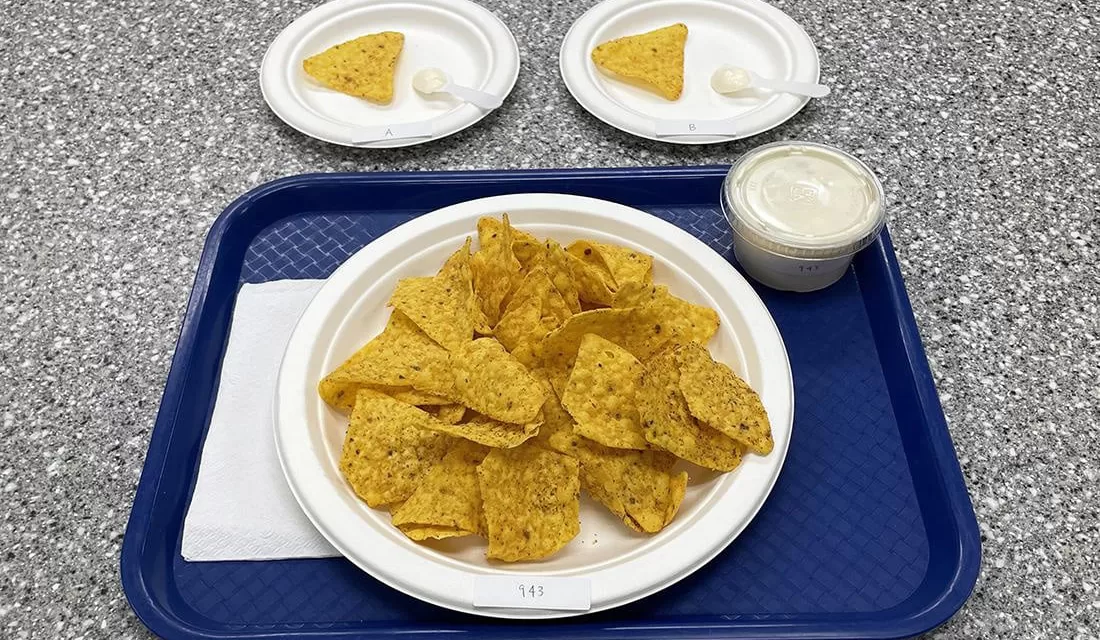September 11, 2024 — A recent study conducted by the Penn State Sensory Evaluation Center has uncovered a surprising way that a popular snack could be contributing to higher calorie intake. The research reveals that adding a dip to salty snacks like chips can lead to a significant increase in overall caloric consumption.
Snacking is a major component of many people’s diets, contributing to roughly one-quarter of their daily caloric intake. With obesity rates on the rise—over 40% of adults in the United States are classified as obese, according to the National Institutes of Health—finding ways to make healthier snacking choices is increasingly important. The latest study from Penn State’s College of Agricultural Sciences explores how the addition of a dip affects snacking behavior and calorie consumption.
The study, led by research assistant Madeline Harper and published online in Food Quality and Preference, reveals that the combination of chips and dip results in a 77% greater caloric intake compared to eating chips alone. Participants consumed the same amount of chips regardless of whether dip was present, leading to a higher total energy intake.
Dr. John Hayes, professor of food science and director of the Penn State Sensory Evaluation Center, emphasized the key finding: “People didn’t eat fewer chips when dip was available; they ate the same amount of chips plus the dip. This lack of compensation means that adding dip to chips can substantially increase overall energy intake without people realizing it.”
In the study, 46 adult participants were served 70 grams of ranch-flavored chips, either with or without a third of a cup of ranch dip. They ate as much as they desired, and their intake was meticulously measured. The results showed that participants consumed an average of 345 calories when eating chips with dip, compared to 195 calories when eating chips alone.
Harper noted that the increased caloric intake with dip may be due to larger bite sizes facilitated by the dip. “Our research suggests that the addition of dip increases the total snack bite-size, which might contribute to the higher energy intake,” she said. This finding highlights the impact of external factors like dips on snack consumption, which has been relatively understudied.
The study sheds light on how the physical properties of food can influence eating behaviors and energy intake. Understanding these dynamics is crucial for addressing issues related to overeating and obesity. “This research opens new avenues for exploring how physical attributes of foods influence our eating habits and calorie consumption,” Dr. Hayes added. “By slowing people down, we might be able to manage energy intake without sacrificing the enjoyment of food.”
This research was supported by the U.S. Department of Agriculture’s National Institute of Food and Agriculture. For those looking to cut down on calorie intake, reconsidering the addition of dips to snacks might be a simple yet effective strategy.
Reference: Harper, M. M., Cunningham, P. M., & Hayes, J. E. (2024). Serving a dip with a salty snack promotes energy intake. Food Quality and Preference. DOI: 10.1016/j.foodqual.2024.105257











